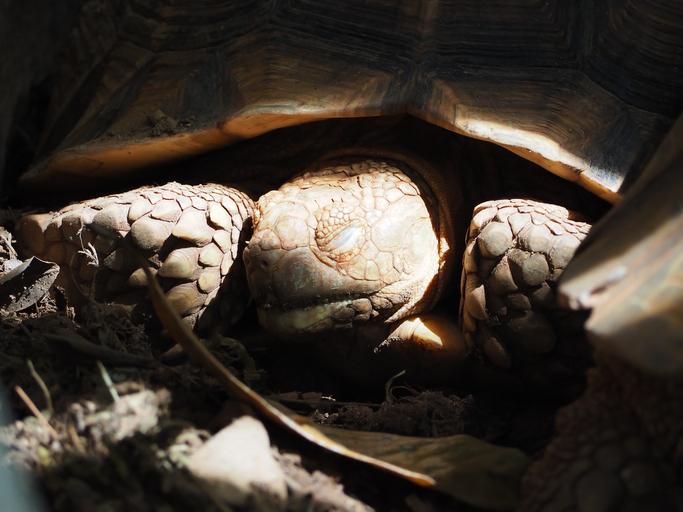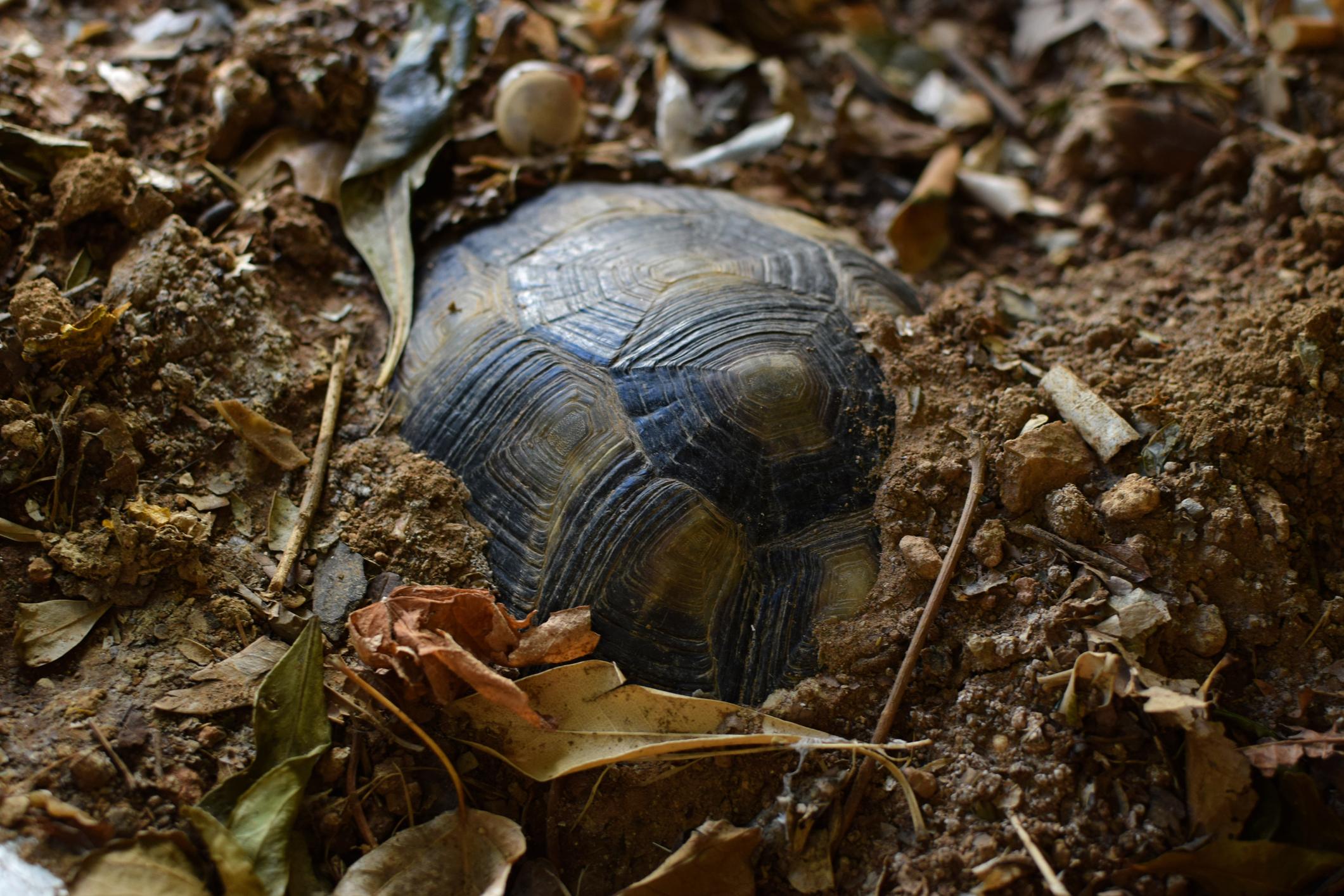How Do Turtles and Tortoises Sleep?

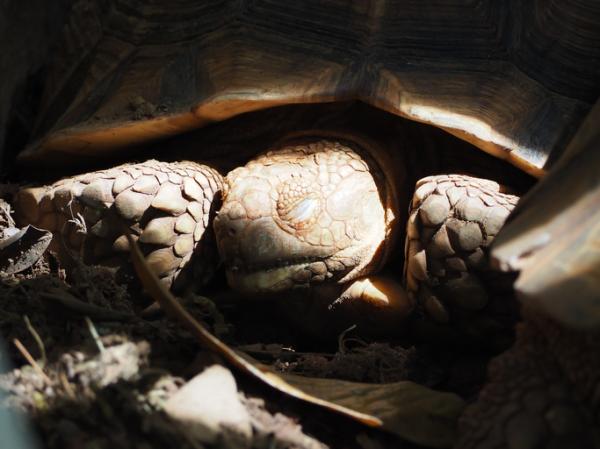
For more than 200 million years, turtles, these ancient reptiles, have graced the Earth.While their behavior has been extensively studied, one aspect that remains intriguing is their sleep patterns. Unlike mammals, turtles don't exhibit the same clear-cut distinction between wakefulness and sleep. Their sleep habits are surprisingly varied, depending on the species, habitat, and environmental conditions.
In this article from AnimalWised, we will delve into the sleeping habits of turtles, covering both sea turtles and tortoises.
Definition of sleep in reptiles
Sleep is an essential biological process for all animals, including turtles and tortoises. It is a period of restful inactivity during which the brain and body undergo various restorative processes. While the exact mechanisms of sleep in reptiles are still being investigated, it is known to play a crucial role in memory consolidation, energy regulation, and overall health.
Sleep in reptiles is generally characterized by a decrease in physical activity, behavioral responsiveness, and a relaxed state of the muscles. Unlike mammals, reptiles do not exhibit rapid eye movement (REM) sleep, which is associated with dreaming and vivid imagery. Instead, their sleep patterns are mainly characterized by non-REM sleep stages, which are further divided into stages N1, N2, and N3.
Reptiles have an internal body clock, known as the circadian rhythm, which regulates their sleep-wake cycle. This rhythm is influenced by external cues such as light and temperature, helping them adjust their sleep patterns to the changing environment.
While both turtles and tortoises are reptiles, their sleep behaviors can differ slightly. In the following sections, we will explore in more detail how do turtles and tortoises sleep.
How do aquatic turtles sleep?
Turtles, being semi-aquatic animals, often take naps during the day and sleep more deeply at night. They may also rest underwater, periodically surfacing to breathe. This applies to both river and sea turtles.
Sea turtles can be found sleeping in various postures, often adapting to the conditions of the ocean environment.
Some species, like loggerheads (Caretta caretta), tend to rest on the surface of the water, bobbing gently with the waves. This posture allows them to conserve energy while keeping an eye out for potential predators or food sources.
In contrast, other species, such as green sea turtles (Chelonia mydas), on the other hand, may sleep underwater, partially submerged with their head and limbs extended. This posture conserves heat and provides protection from predators.
Some sea turtle species, such as the leatherback (Dermochelys coriacea), exhibit a behavior where they burrow into sandy or muddy substrates for sleep, creating a secure and sheltered environment.
In addition to their sleep postures, sea turtles may also exhibit unique behaviors while resting. These behaviors may vary depending on the species and individual turtle.
Some sea turtles may occasionally flip their shells upside down while sleeping, which is thought to provide additional protection from predators or the sun.
Further distinctions emerge as loggerhead sea turtles, while asleep, release bubbles, which may be a way to communicate with other turtles in the area.
Finally, green sea turtles may intermittently move their tails in a flailing manner, which is believed to help circulate oxygenated water around their bodies.
Curious about the non-verbal cues and behaviors of these ancient reptiles? Discover their unique communication methods in our article on their social lives.
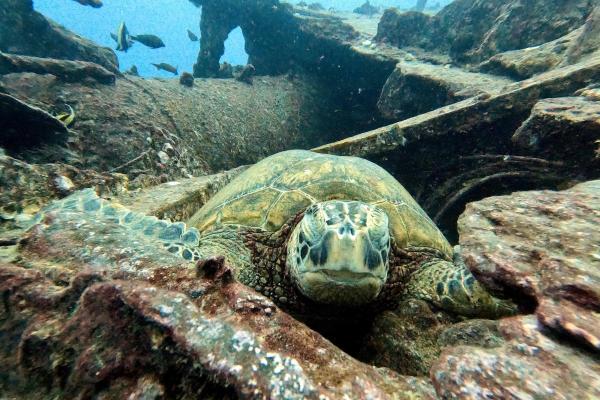
How do tortoises sleep?
Tortoises display a more varied range of sleep postures compared to their aquatic counterparts, adapting to the specific conditions of their habitats.
In one common posture, tortoises tend to curl up into a tight ball, securely tucking their head and limbs under their shell. This not only aids in conserving heat but also serves as a protective measure against predators and reduces water loss.
Conversely, in warmer environments, tortoises may opt for a different posture, sleeping with their limbs extended. This position facilitates better heat absorption and potentially offers an elevated vantage point.
Another prevalent behavior among tortoises involves burrowing into the ground or vegetation for sleep, creating a concealed and secure sleeping environment. This behavior is particularly notable in desert tortoises, where water conservation and temperature regulation are crucial.
Beyond sleep postures, tortoises may showcase distinctive behaviors while at rest. Among these, yawning is a notable occurrence during sleep. This behavior is believed to aid in clearing their airways and preparing for breathing during deeper sleep stages.
It is important to emphasize that the sleep behavior of terrestrial turtles can be influenced by various factors, including species, habitat, and environmental conditions. Understanding these nuances contributes to a comprehensive appreciation of the diverse sleep habits exhibited by these fascinating reptiles.
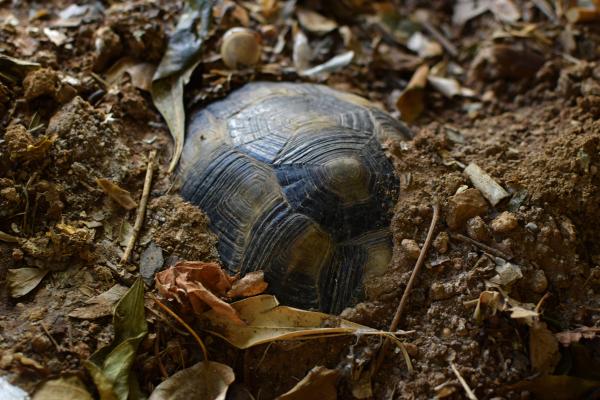
Do turtles dream?
Research on reptile dreaming remains relatively limited when compared to studies on mammals and birds. While there's some indication that reptiles may undergo a form of sleep involving cognitive processes, observing direct evidence of dreaming in reptiles proves challenging. Their slow metabolism and the absence of overt dream-like behaviors contribute to this challenge.
Despite reptilian brains having a comparatively simple cortex, they still harbor structures responsible for processing sensory information, memory, and emotional responses. These structures might potentially support experiences akin to dreaming. It's crucial to acknowledge that in reptiles, the specific brain structures involved in dreaming could differ from those in mammals due to evolutionary variances.
Nevertheless, the fundamental concept of increased brain activity during sleep suggests that reptiles may partake in some semblance of dream-like experiences, facilitating the processing and consolidation of memories, emotions, and sensory encounters.
Want to delve deeper into the fascinating world of turtles? Check out our article on turtle anatomy, where we explore the intricate structures that make these remarkable reptiles so unique.

Where do turtles sleep?
Turtles and tortoises exhibit diverse sleep patterns that are intrinsically linked to their natural habitats and behaviors.
Aquatic turtles, such as sea turtles, often sleep underwater, adjusting their buoyancy to remain near the surface. These turtles may also sleep on floating logs or reefs, allowing them to conserve energy while remaining vigilant for predators.
River turtles, on the other hand, prefer to sleep in calm, sheltered areas with access to water. This could include areas with submerged vegetation, rock ledges, or even artificial structures provided by humans. These sheltered environments provide protection from predators and harsh weather conditions while allowing the turtles to regulate their body temperature.
On the other hand, terrestrial tortoises tend to sleep in burrows, caves, or dense vegetation. These sheltered environments provide protection from harsh weather conditions and predators while allowing them to thermoregulate effectively. Tortoises may also adjust their posture or bask in the sun to regulate their body temperature and promote optimal sleep.
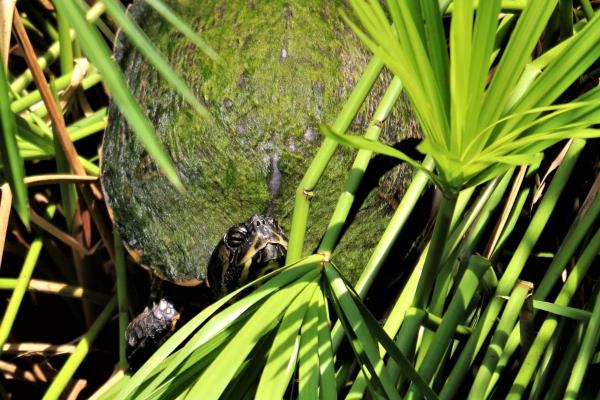
How much do turtles sleep?
The average sleep duration for turtles and tortoises varies depending on the species, age, and individual animal's preferences. However, most turtles and tortoises typically sleep for around 12-14 hours per day, distributed throughout the day in short naps or longer stretches at night. Aquatic turtles may spend more time napping during the day, while tortoises tend to be more active during dusk and dawn, with longer naps in the middle of the day.
Sleep duration can also vary between different turtle and tortoise species and age. For instance, smaller species may sleep for slightly shorter periods than larger ones. Young turtles and tortoises may also sleep more than adults, as they are still growing and developing.
Furthermore, environmental factors, such as temperature and humidity, can also affect sleep patterns. Turtles and tortoises may sleep more when it is cooler and less humid, and they may be less active during the hottest parts of the day.
Ever wondered how long these reptiles can live? Unravel the secrets of turtle longevity in our enlightening article on their lifespan.
Do turtles hibernate?
No, turtles do not hibernate in the same way that mammals do. Instead, they brumate, which is a slower metabolic state that allows them to conserve energy during cold weather. During brumation, turtles will burrow into the mud or sand at the bottom of a body of water or in a protected area on land. Their heart rate and breathing rate will slow down, and they will go into a state of semi-consciousness. Some turtles may even stop eating altogether.
Aquatic turtles are more likely to hibernate than terrestrial turtles. This is because aquatic turtles are already accustomed to living in cold water, and they can use the water to regulate their body temperature. Terrestrial turtles, on the other hand, are more vulnerable to cold weather, and they may need to brumate to survive.
Discover more about the turtle brumation process by reading this additional article.
If you want to read similar articles to How Do Turtles and Tortoises Sleep?, we recommend you visit our Facts about the animal kingdom category.
- Animal Diversity Web. (2020). Available at: https://animaldiversity.org/
- Hickman, C.; Roberts, L.; Parson A. (2000). Comprehensive principles of zoology . McGraw Hill Inter-American: Spain.
- Hart, K., White, C., Iverson, A., and Whitney, N. (2016). Trading shallow safety for deep sleep: Juvenile green turtles select deeper resting sites as they grow. Available at: https://pubs.usgs.gov/publication/70175402





